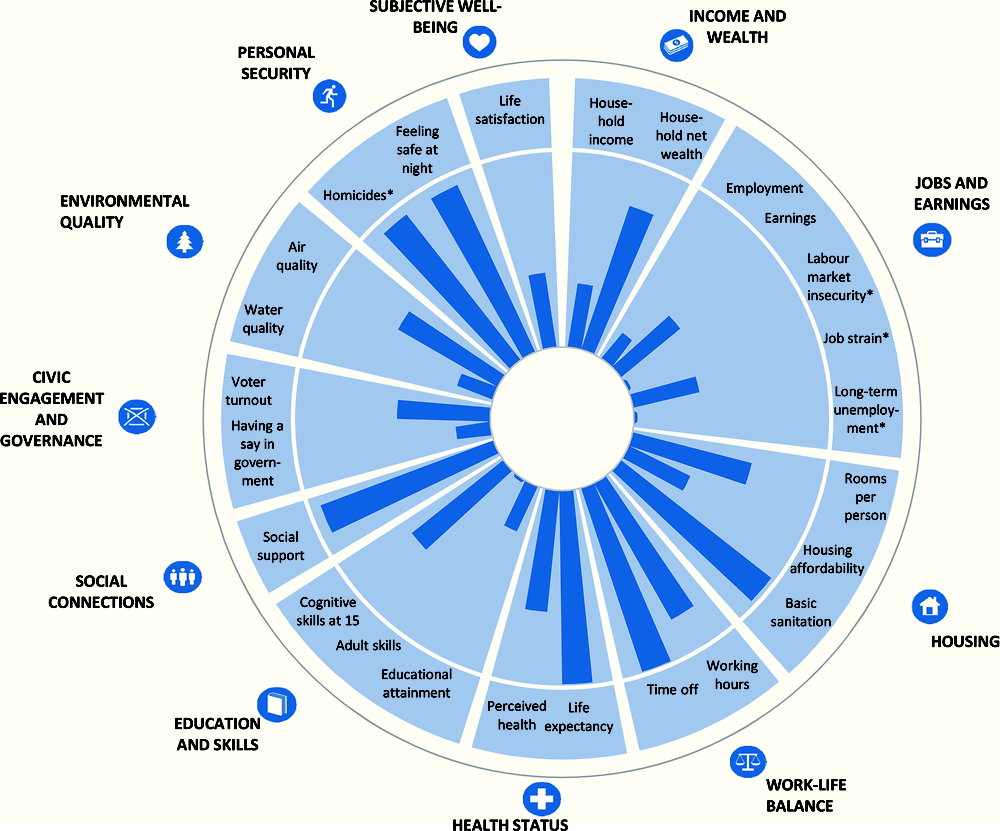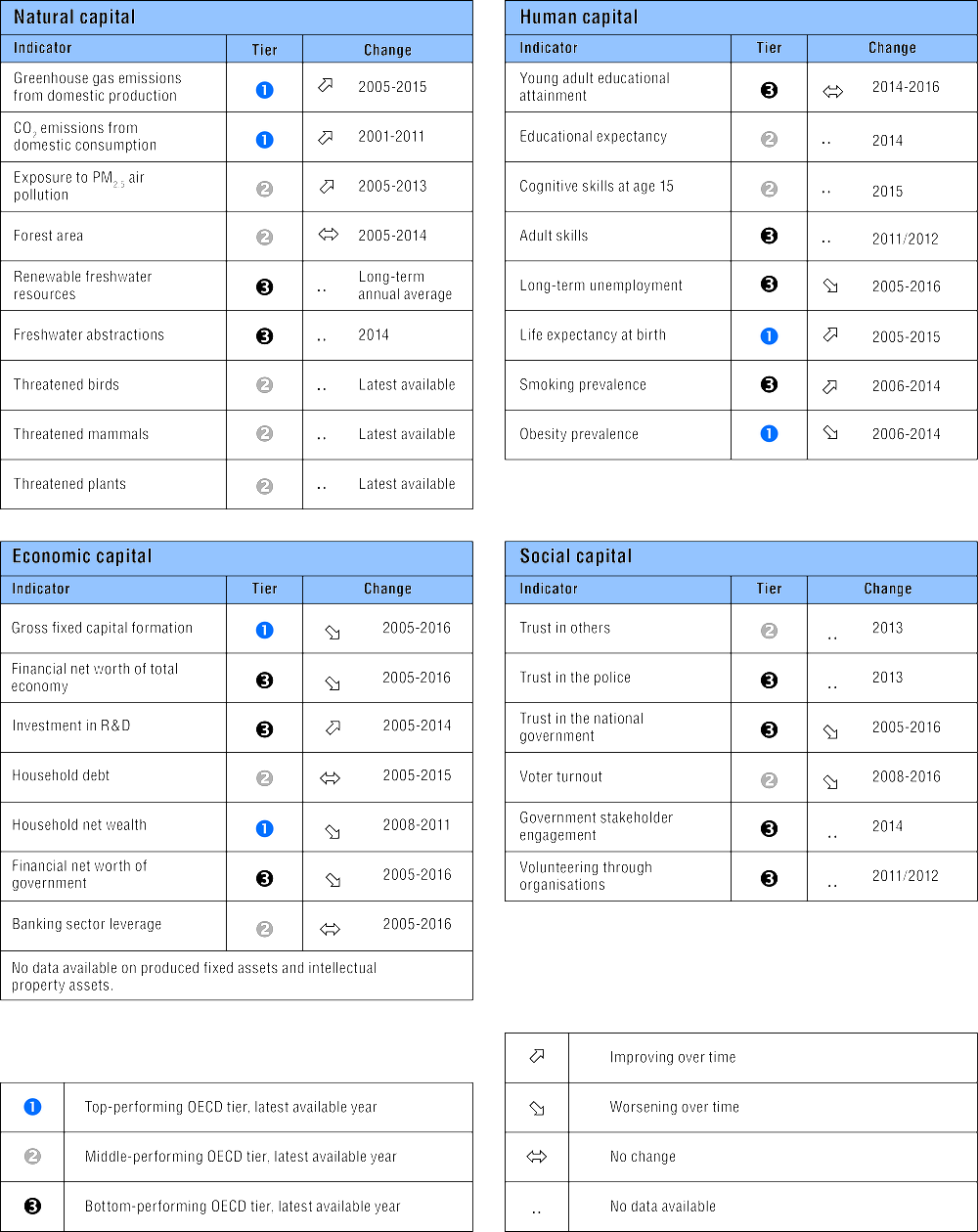How's life in Spain?
Relative to other OECD countries, Spain’s average performance across the different well-being dimensions is mixed. Despite a comparatively low average household net adjusted disposable income in 2015, household net wealth was above the OECD average in 2011 (the latest available year). Spain has particular weaknesses in terms of jobs and earnings: for instance, both labour market insecurity and the long-term unemployment rate are among the highest in the OECD. However, work-life balance is an area of strength: only around 5% of employees regularly worked long hours, less than half of the OECD average, and the full-time employed report having among the highest levels of time off (i.e. time spent on leisure and personal care) in the OECD. Life expectancy at birth (83 years) is nearly 3 years above the OECD average, and social support is also relatively high. Conversely, only 58% of the adult working-age population have completed at least an upper secondary education, well below the OECD average of 75%, and adults’ skills are also below the average.


